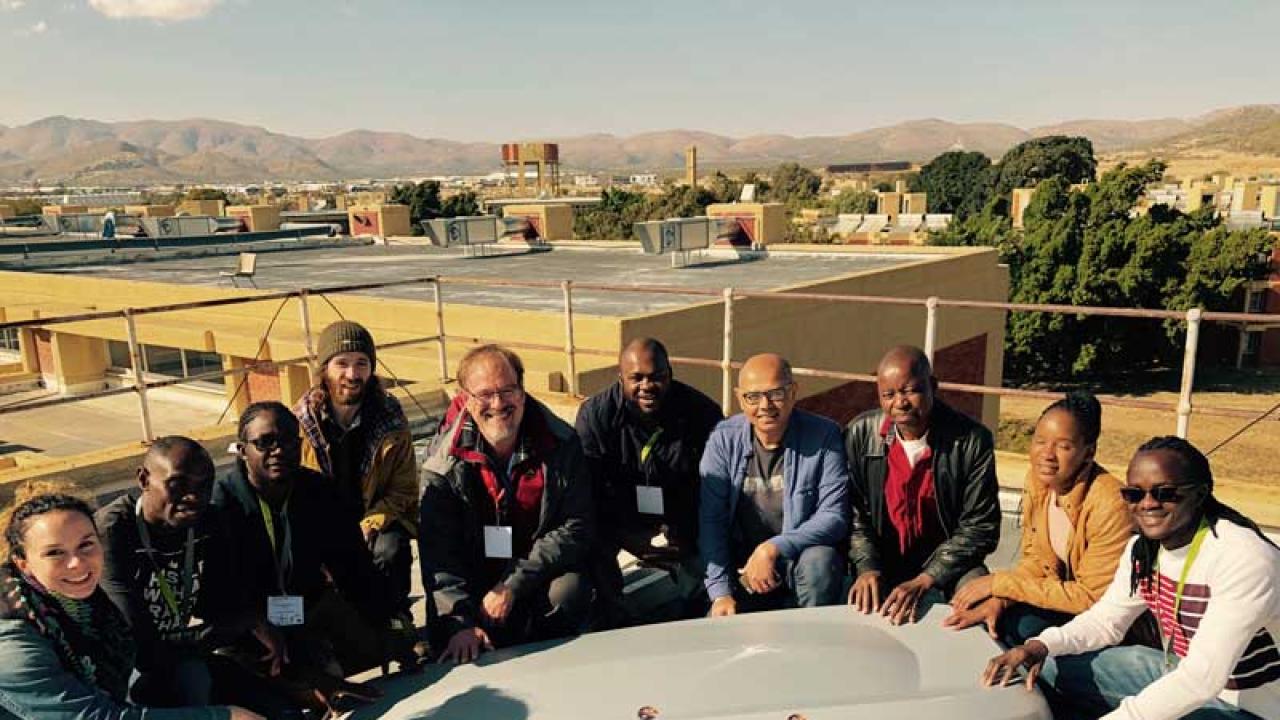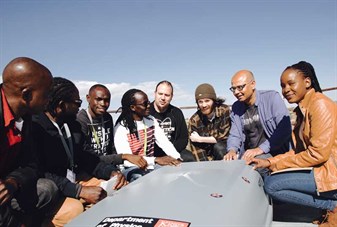
Of all continents, Africa is by far the richest in potential human capital, with a full 60% of the population below the age of 25. At the same time, African physicists are significantly underrepresented in the global communities of cosmologists, particle physicists, and astrophysicists, with these science communities underdeveloped on the continent. Five established high energy physicists, several of whom have a strong personal connection to the continent, founded a month-long graduate physics summer school to help develop the potential of young African physicists who want to study these fundamentals of the universe.
Held every two years in different African countries, the school recently held its fifth iteration, this time in Windhoek, Namibia (past locations have included Stellenbosch, South Africa; Kumasi, Ghana; Dakar, Senegal; and Kigali, Rwanda). ICTP physicist Bobby Acharya, who was born in Uganda, has been involved in the organization of the schools from the start. The first African School of Fundamental Physics and Applications, held in 2010, promoted, fostered, and taught high energy physics topics and applications to bright young students from across Africa. That formula has continued with successive schools, and the popularity of the event has grown: the number of countries represented by students has increased from 18 to 26, while the percentage of female participants has increased from 16% to 41%.
In addition to the school, Acharya and co-organizers Ketevi Assamagan of Brookhaven National Lab and Steven Muanza of IN2P3 France, with the help of Christine Darve and John Ellis, all colleagues through the CERN laboratory, plan outreach activities for different audiences to broaden the impact of the schools. This year, organizers held a workshop for 63 high school physics teachers and visited schools, bringing the joy of physics to an additional 1300 young students.
Acharya was recently awarded the Lawrence Bragg Medal and Prize from the Institute of Physics in the United Kingdom for his outreach activities, including his work organizing this school. “For most of the students it is the first time they get to meet young African physicists similar to themselves, from other parts of Africa,” Acharya says. The organizers want the students to spend their time focusing on that networking and on absorbing the physics. This is one of the reasons every accepted student is fully funded for the duration of the school, including travel, meals, and accommodation, removing as many barriers as possible to participation.
“The school continues to grow, and it’s become a big deal in physics communities in and outside of Africa,” says Acharya. “We have added a conference with the 2018 school, and continued it with 171 scientists participating, including some former school participants, and some lecturers at the school.” Acharya described two participants in previous years’ schools who came back to the Namibian school to lecture. “It’s very exciting to see the caliber of the school participants increase so much over the years; the level of the students is very high.”
 One of the most exciting aspects of this year's edition was an ICTP Physics Without Frontiers (PWF) project: the installation of a cosmic ray detector on the roof of the host institution, the University of Namibia. Acharya worked with his frequent collaborator and PWF co-coordinator Kate Shaw to secure funding and cooperation from Kings College London, the University of Sussex in the UK, the Dutch National Institute for Subatomic Physics, ICTP, and the University of Namibia. The expensive, large, and unwieldy detector was packed carefully, shipped to Namibia, ushered through customs, and installed at the University of Namibia to be used for both research and teaching on elementary particles for years to come. "It was a wonderful and intense experience," says Shaw.
One of the most exciting aspects of this year's edition was an ICTP Physics Without Frontiers (PWF) project: the installation of a cosmic ray detector on the roof of the host institution, the University of Namibia. Acharya worked with his frequent collaborator and PWF co-coordinator Kate Shaw to secure funding and cooperation from Kings College London, the University of Sussex in the UK, the Dutch National Institute for Subatomic Physics, ICTP, and the University of Namibia. The expensive, large, and unwieldy detector was packed carefully, shipped to Namibia, ushered through customs, and installed at the University of Namibia to be used for both research and teaching on elementary particles for years to come. "It was a wonderful and intense experience," says Shaw.
A school of this magnitude requires a lot of energy to organize, including consistent, year-round efforts from the organizing committee. Nearly 30 organizations and governments contribute to funding each school, and the fundraising is done directly by Acharya and his colleagues specifically for the school. Moving locations for each school means finding suitable host universities and working very closely with the local host organizers. “This year we had the hosts of the 2020 school, which will be in Marrakech, come to this school, to really get a feel for what goes into organizing it,” says Acharya. “It is a lot, but the result is always impressive and extremely rewarding.”
---- Kelsey Calhoun
















